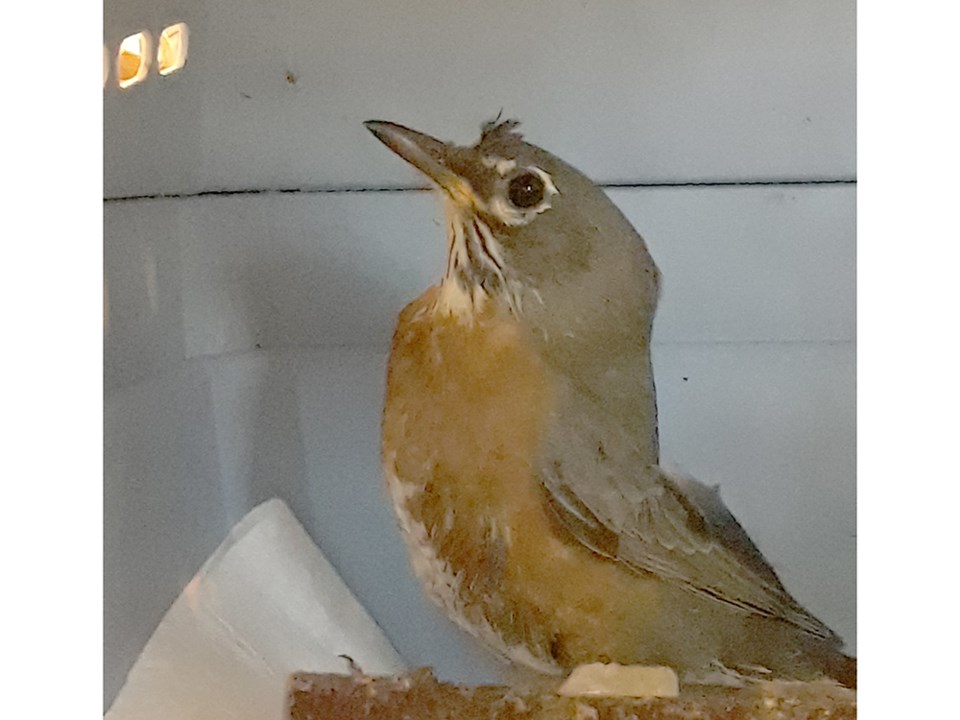20-foot ceilings at the auto mechanic school at Vancouver Island University recently made for a difficult capture. With the wide open garage doors, two robins had flown in and up. Unable to find their way out, they were in trouble.
When Powell River Orphaned Wildlife Society (PROWLS) president Merrilee Prior arrived, the immature robin was quickly caught but the other adult was in the very peak and now very wary.
By taping a butterfly net onto a very long pole and another net onto a bamboo pole, which made for a bendy, unwieldy tool, after 20 minutes of sweeping and swooping, the second robin was finally nabbed and quickly released to join its companion.
As well as the late departures of our summer robins, we also have an influx of migrating robins on their way a bit further south. Being in unfamiliar territory, they are particularly vulnerable to window strikes and consequent injuries: concussion, shoulder and wing damage.
A possible consequence to a window strike is a ruptured air sac. As part of their amazing respiratory system, birds have air sacs connected to their lungs. With the help of air sacs, they can take in oxygen even during exhalation and get air into their muscles. This is what allows them to fly such long distances without stopping.
If the air sac is ruptured, air leaks out under the skin causing a big bubble on the back, breast or shoulders, which impairs their ability to absorb oxygen.
Right now at PROWLS, we have many robins in recovery.



